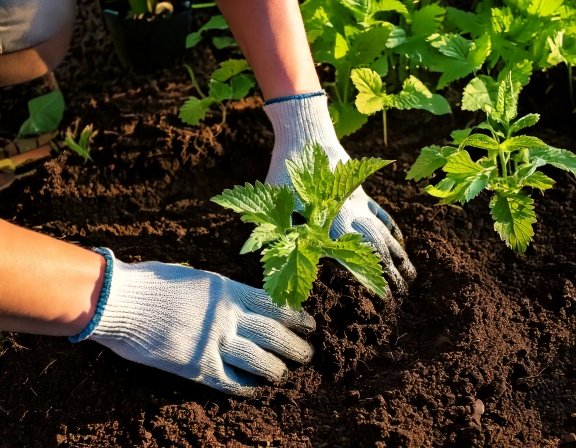
3-DAY GENTLE DETOX PLAN (PDF)
Cleanse your body gently with our meal plan, soothing teas, and grocery list—no harsh ingredients, just nourishing, everyday foods.
Download Free GuideReverse Your Fatty Liver 100% Naturally
- Focuses on whole-food nutrition, natural detox, and science-backed protocols
- Incorporates plant-based remedies and gentle lifestyle changes
- Learn practical steps for liver health—no risky drugs or crash diets
The Surprising Benefits of Growing Nettle with Other Medicinal and Culinary Herbs
Why Grow Nettle in Your Herb Garden?
Nettle (Urtica dioica) has long been known as a wild superfood, but it’s also a powerful ally when grown with other herbs. While its sting may intimidate new gardeners, nettle is a nurturing companion—boosting soil health, supporting pollinators, and even improving the vitality of neighboring plants. For anyone cultivating a wellness garden, including nettle alongside other medicinal and culinary herbs is a smart, time-tested strategy.
Fresh, homegrown nettle brings rich minerals and protein to your table, while its vigorous roots and foliage help balance the herb bed’s ecosystem. Plus, when harvested and handled with gloves, nettle is easy to manage and endlessly useful year-round.
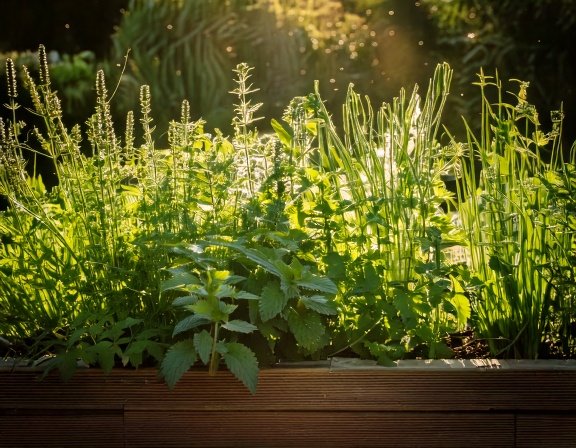

ANTI-INFLAMMATION STARTER KIT (PDF)
Jumpstart your anti-inflammatory journey with a 1-pager, 3 quick recipes, and a printable shopping list. Practical, actionable, and deliciously healthy!
Download Free GuideHow Nettle Benefits Other Herbs
Nettle acts as a dynamic accumulator—its deep roots draw up minerals from the subsoil, enriching the topsoil for nearby plants. As nettle leaves break down (in compost or as mulch), they release nutrients, boosting the growth and flavor of other herbs. Nettle also hosts predatory insects that control aphids and other pests, reducing the need for chemical intervention.
Key Ways Nettle Supports Your Herb Garden
Beyond its impressive nutritional and medicinal value, nettle is an incredible companion plant that brings balance and vitality to any herb or vegetable garden. Acting as a natural fertilizer, pest deterrent, and pollinator magnet, nettle quietly boosts the health of the entire garden ecosystem. Here’s how this humble “wild green” becomes a true garden ally.
Boosts Essential Oils & Herb Vitality
Nettle enhances the essential oil production and overall vigor of neighboring aromatic herbs such as mint, basil, and oregano. When grown nearby, it helps create microclimates rich in minerals and nutrients, encouraging herbs to develop stronger flavors, scents, and medicinal potency.
Attracts Beneficial Insects
Nettle acts as a habitat for ladybugs, lacewings, and other beneficial insects—natural predators that help control aphids, mites, and other garden pests. By drawing in these allies, nettle reduces the need for chemical pest control while supporting a thriving, balanced garden ecosystem.
Supercharges Compost
Fresh nettle leaves are loaded with nitrogen and trace minerals, making them a powerful compost activator. Add chopped nettle to your compost pile to speed up decomposition and enrich the finished compost with nutrients that strengthen soil health and plant growth. It’s a natural, sustainable fertilizer booster you can harvest from your own garden.
Provides Gentle Shade & Soil Protection
Nettle’s tall, leafy growth can offer light shade for tender seedlings or low-growing herbs that might otherwise suffer in harsh sunlight. This living canopy helps conserve soil moisture, regulate temperature, and reduce water stress during hot or dry periods—especially valuable for delicate herbs like cilantro, parsley, or chamomile.
Quick Tip: Plant nettles along garden edges or near compost bins, where they can contribute to soil health and beneficial insect activity without overtaking smaller plants. Their deep roots pull up minerals from below the soil surface, naturally enriching nearby herbs and vegetables.
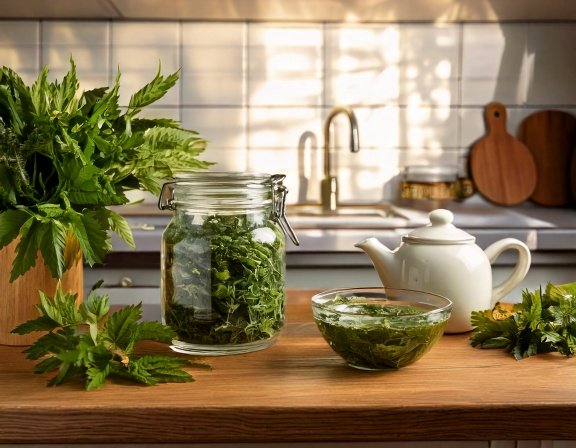
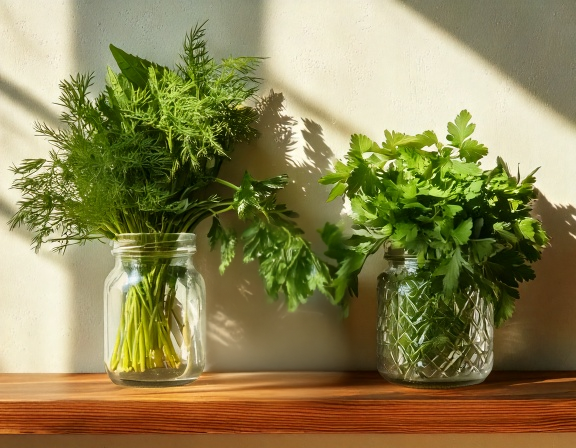
Best Companions for Nettle
Nettle is more than a standalone superherb—it’s a natural garden enhancer that pairs beautifully with other herbs to create thriving, nutrient-rich beds. Because it improves soil fertility, boosts essential oil content, and attracts beneficial insects, nettle makes an excellent companion for many kitchen and medicinal herbs. Here are some of the best partners to plant alongside nettle for mutual growth and garden harmony.
Mint
Mint and nettle both love moist, rich soil and partial shade, making them natural companions. Mint’s strong, refreshing scent helps deter aphids, beetles, and other common garden pests, while nettle improves soil nutrition and moisture retention. Together, they form a lush, pest-resistant corner of your garden—just be sure to contain them both, as they like to spread!
Parsley and Chives
These culinary staples benefit from the mineral-rich environment nettle creates. Nettle draws up nutrients like calcium, iron, and magnesium from deep in the soil, enriching the surrounding area. Parsley and chives grown nearby tend to have brighter green foliage and more vibrant flavor—a sign of stronger nutrient uptake.
Lemon Balm
Lemon balm thrives in the same moist, fertile soil conditions as nettle and tends to grow bushier and more aromatic when planted nearby. The two create a soothing, pollinator-friendly pairing perfect for tea gardens or shady herb borders. Their complementary growth habits make efficient use of space while supporting beneficial insects.
Sage and Oregano
When grown near nettle, sage and oregano develop deeper aroma and higher essential oil content. Nettle’s influence on soil vitality and microbe activity helps these Mediterranean herbs express stronger flavor profiles. Together, they form a potent trio for culinary and medicinal use—earthy, fragrant, and full of resilience.
Comfrey and Yarrow
Nettle, comfrey, and yarrow are all known as dynamic accumulators—plants that pull minerals from deep in the ground and deposit them into the topsoil through their leaves. Growing them together creates a nutrient-dense, self-sustaining patch that benefits the entire garden ecosystem. Use their leaves as compost material or mulch to naturally fertilize other plants.
Quick Tip: Pair nettle with herbs that share similar soil and moisture preferences. Their cooperative root systems and shared ecosystem benefits make for a more balanced, thriving garden that supports both plant and pollinator health.
Reverse Your Fatty Liver 100% Naturally
- Targets stubborn liver fat, sluggish metabolism, and blood sugar imbalance
- Helps relieve symptoms like fatigue, joint discomfort, or digestive issues
- Step-by-step approach—suitable for all ages and most health backgrounds
Plants to Avoid Growing Near Nettle
While nettle benefits many herbs and vegetables through soil enrichment and pest control, not every plant enjoys its company. Some Mediterranean herbs and warmth-loving species prefer drier or hotter conditions than nettle’s preferred moist, rich soil. To ensure all your plants thrive, keep these few herbs at a distance from your nettle patch.
Thyme and Rosemary
Thyme and rosemary thrive in dry, well-drained, and low-nutrient soil, which contrasts with nettle’s love for moisture and fertility. When planted too close to nettle, they may struggle with excessive humidity and nutrient-rich conditions, leading to root rot or leggy growth. For best results, grow thyme and rosemary in separate, sunny spots with sandy soil to mimic their Mediterranean origins.
Basil
Basil prefers consistent warmth and sunlight—conditions that differ from nettle’s cooler, moist environment. Nettle’s tendency to create shade and retain moisture can stunt basil’s growth and reduce its aromatic oil production. Keep basil in its own warm, sunny bed or container to ensure it develops strong, flavorful leaves.
Garden Tip: Group nettle with herbs that enjoy similar soil and moisture levels, such as mint, lemon balm, parsley, or chives. Keep dry-loving herbs like thyme, rosemary, and sage in their own section for optimal growth and aromatic quality.
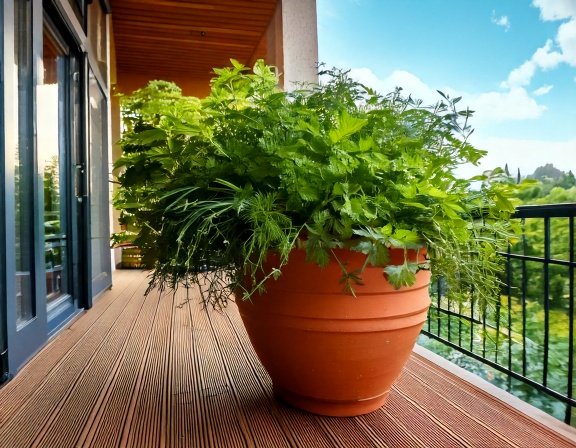

How to Grow and Harvest Nettle Safely
Nettle (Urtica dioica) is one of the most nourishing and useful herbs you can grow—but it does require mindful handling. Known for its tiny stinging hairs, nettle rewards careful gardeners with lush green leaves packed with vitamins, minerals, and plant protein. Growing and harvesting nettle safely allows you to enjoy its many benefits—without the sting! With the right setup, protection, and timing, nettle becomes a long-lived, low-maintenance herb that supports both your health and your garden’s ecosystem.
- Site: Choose a partly shaded, moist spot in the herb bed or along a garden border.
- Control: To prevent nettle from spreading aggressively, plant in a large pot sunk into the ground or dedicate a corner of the garden.
- Harvest: Always use gloves! Snip young shoots and leaves in spring for best flavor and nutrition. Dry leaves for tea or soups.
- Compost: Add spent nettle stems and leaves to your compost pile or steep in water for a mineral-rich “nettle tea” liquid fertilizer.
- Grower’s Tip: Prune nettle regularly to keep plants bushy and prevent flowering (which can lead to unwanted spreading). Use cuttings as mulch or compost booster, and always leave a few plants for pollinators and beneficial insects!
See Garden Tools at Amazon
MoveWell Daily: Plant & Nutrient Powered Joint Formula
- Features Turmeric Curcumin, Boswellia Serrata, Type II Collagen, Hyaluronic Acid
- Traditional botanicals plus modern joint nutrients
- No harsh chemicals—just science-backed natural relief
Active Compounds & Benefits
Nettle is a true superfood herb, rich in vitamins, minerals, and plant compounds that nourish and rejuvenate the body from the inside out. Long valued in traditional herbal medicine, it’s known as a nutritive tonic—an herb that rebuilds strength, supports vitality, and restores balance to multiple body systems. Its dense nutritional profile makes it an ideal daily ally for energy, detox, and long-term wellness.
Key Nutrients and Active Compounds
- Vitamins: A, C, and K – support skin, immune, and bone health
- Minerals: Iron, calcium, magnesium, silica, and trace minerals – rebuild blood, strengthen bones, hair, and nails
- Chlorophyll and Plant Protein: Deeply mineralizing, oxygenating, and restorative to tissues and cells
Core Benefits
- Builds Blood & Energy: Rich iron and chlorophyll content help replenish red blood cells and combat fatigue.
- Supports Kidneys & Adrenals: Gentle diuretic action helps flush toxins and balance hydration without depleting minerals.
- Strengthens Hair, Nails & Bones: High calcium, magnesium, and silica content promote structural health and growth.
- Anti-Inflammatory & Allergy Relief: Naturally reduces inflammation and histamine reactions, easing seasonal allergies and joint discomfort.
- Mineralizes the Body: Replenishes essential nutrients lost through stress or poor diet, restoring balance and resilience.
- Enhances Herbal Blends: Adds earthy flavor, depth, and nutritional value to teas, tonics, and wellness formulas.
Quick Tip: Drinking nettle tea regularly or adding it to herbal blends is one of the simplest ways to stay energized, grounded, and deeply nourished year-round.
Add dried nettle to teas, soups, or blend fresh leaves into pestos for a nutrient-packed boost.

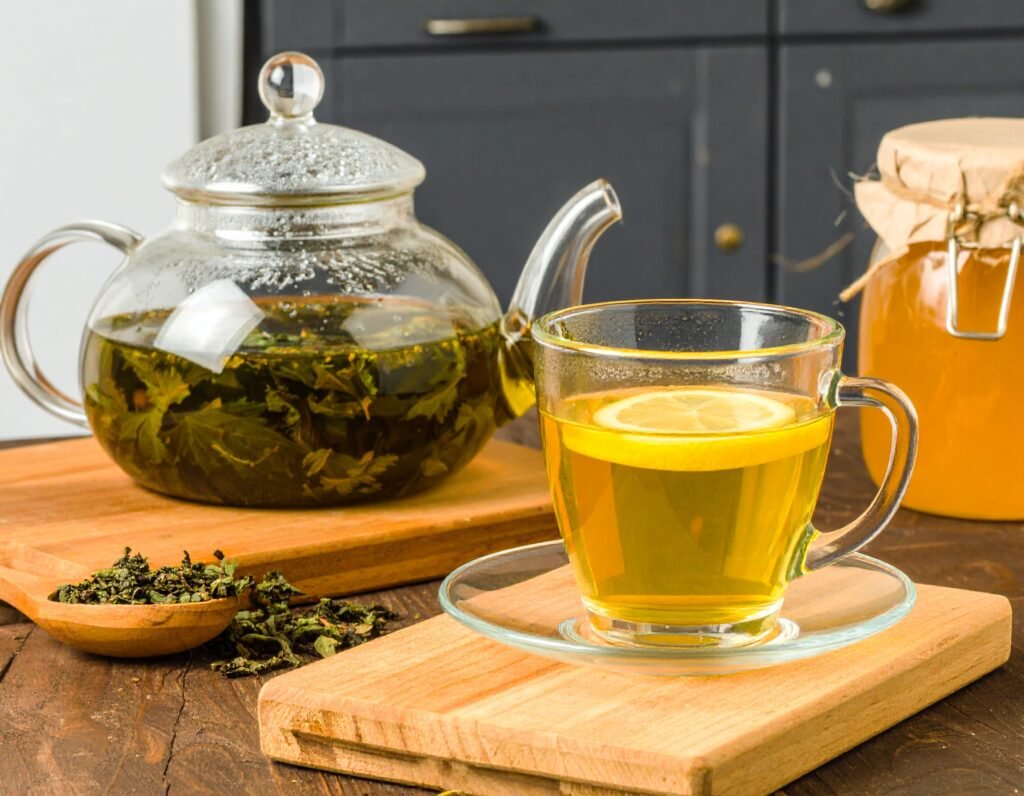
Year-Round Nettle: For a Thriving Wellness Garden
Nettle is one of the few herbs that gives back to your health and your garden in every season. From nutrient-rich spring greens to mineral-packed winter teas, nettle cycles through the year as both a wellness tonic and soil rejuvenator. With just a bit of planning, you can enjoy its benefits in your kitchen, teacup, and compost pile all year long.
Spring: Fresh Growth & Foraging
Early spring is the prime season to harvest young nettle shoots—before flowering—for teas, soups, and vibrant green pestos. These tender leaves are rich in vitamins, minerals, and chlorophyll, helping to rebuild energy after winter. Use gloves when harvesting, and cook or dry the leaves to remove their sting.
Summer: Harvest, Dry & Nourish the Garden
As nettle reaches full growth, begin cutting and drying leaves for winter storage. Hang small bunches upside down in a shaded, airy space until crisp. During this time, you can also brew nettle fertilizer tea by steeping fresh leaves in water for 1–2 weeks—an excellent natural plant feed that boosts nitrogen and soil vitality.
Fall: Feed the Soil
In autumn, cut back mature nettle plants and use the trimmings as mulch or compost material. Their mineral-rich leaves decompose quickly, returning nutrients to the soil and supporting healthy growth for next year’s herbs. Nettle mulch also helps retain moisture and protect the garden bed through seasonal transitions.
Winter: Herbal Nourishment from Storage
In the colder months, turn to your stored dried nettle leaves for nourishing teas, broths, and herbal blends. This mineral-rich infusion helps support energy, immune strength, and hormone balance through winter’s slower pace. Pair with chamomile or lemon balm for a soothing, restorative tea ritual.
Quick Tip: Keep a dedicated patch or pot of nettle growing near your compost or garden edge—it will reward you each season with nutrition for your body and vitality for your soil.
Nettle’s presence keeps your herb bed balanced, nourished, and full of vitality all year.
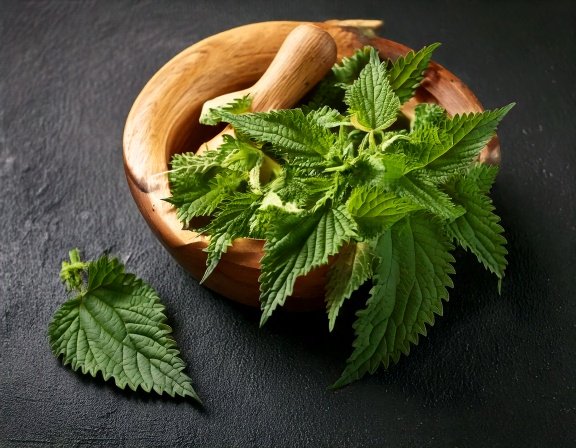
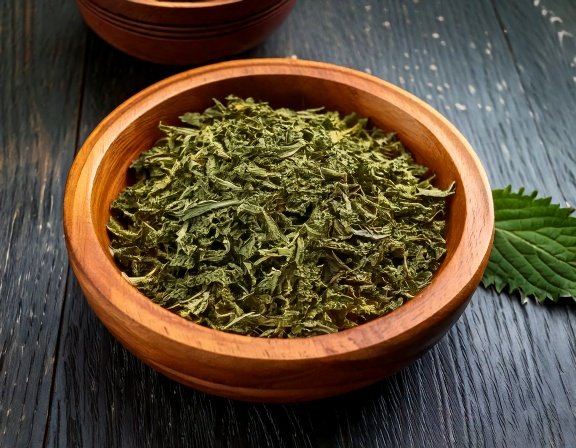
Insta Soothe: Capsaicin, Arnica & Turmeric Relief Cream
- Features plant-powered actives: Capsaicin, Arnica, Turmeric, Boswellia Serrata
- Menthol and MSM for soothing coolness and mobility
- No harsh chemicals—just natural comfort for your joints
Did you know?
Ready to grow a thriving, mineral-rich herb garden?
Subscribe for more plant wisdom
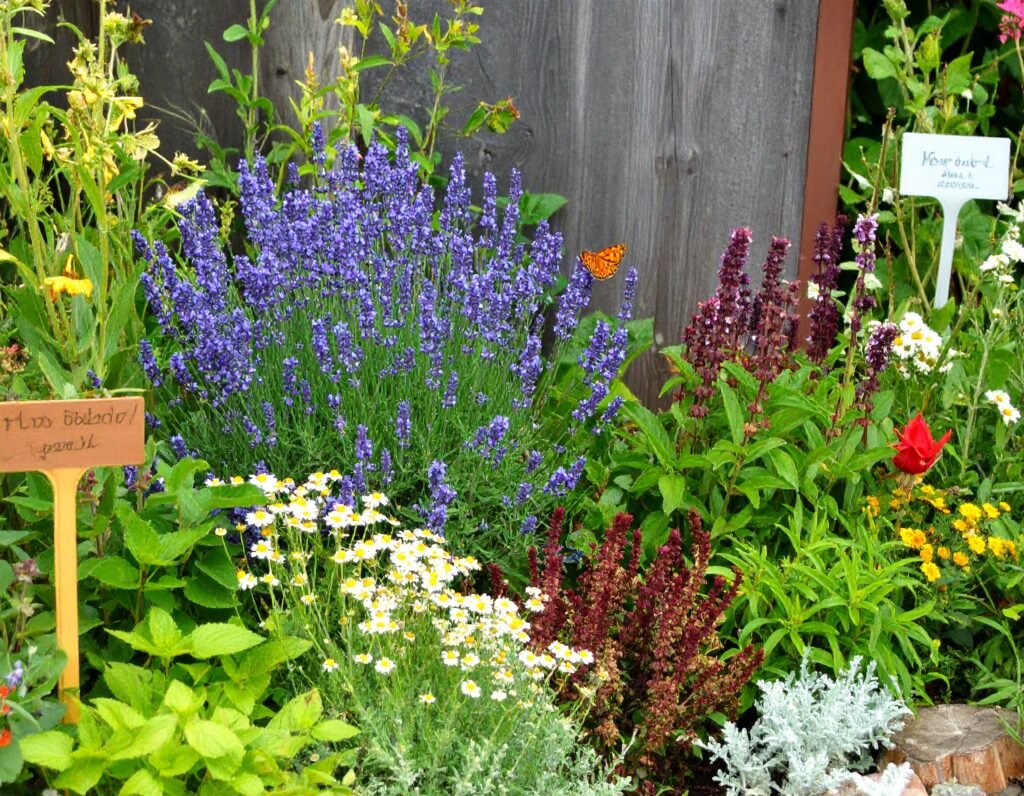
Features four clinically proven nutrients plus Mobilee®, a patented ingredient that multiplies joint-lubricating hyaluronan molecules for better flexibility and comfort.
- Supports synovial fluid & smooth movement